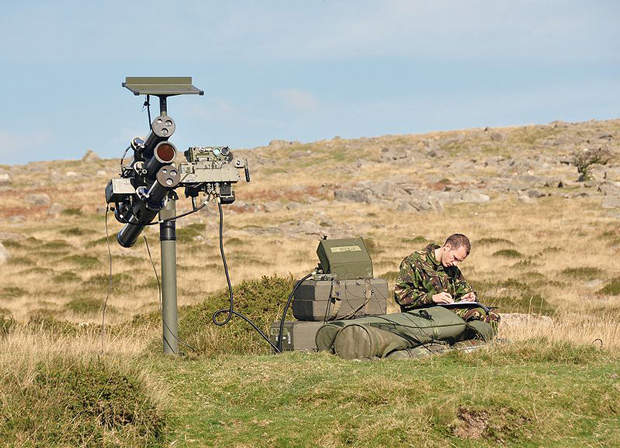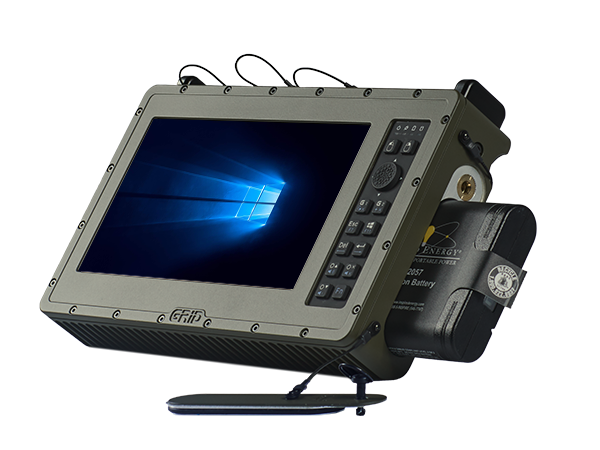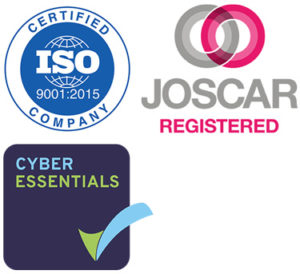Thales selected the GRiDCASE 2507 as the Data Entry Device (DED) for the Lightweight Multiple Launcher (LML) System used by the UK Ministry of Defence.
The GRiDCASE 2507 carries out Built-in Test and performs System Configuration checks for the LML to ensure the system is running at full operational capacity. In addition, it is used to display in real-time what the Aimer can see through their Eye-piece to the Commander.

Soldier in Operation of STARStreak Launcher
The Shoulder Launch Aiming Unit (Mk 3 SL) and Lightweight Multiple Launcher (LML) are specifically designed for man portability and flexibility of use. Air Defence capability is provided as a (3 missile) tripod-based launcher or a single missile shoulder launch capability.
The Mk3 AU provides all the functions required to complete a STARStreak or Lightweight Multi-role Missile (LMM) engagement against an air threat, including target detection, target tracking, missile launch, and missile guidance to provide an effective engagement capability against a wide variety of threat types.
The MK3 AU provides a 24-hour capability utilising an un-cooled thermal imaging camera solution. The thermal imager has a wide field of view surveillance mode for target detection and a narrow field of view mode for target engagements. The system is designed for low power consumption, reduced weight and maximum man portability.

The DED has to have the ability to survive the harshest environments whilst being able to easily integrate with the existing System.
The environments in which the DED is to be used require the product to be operational in extreme conditions. This includes very high and low operating temperatures and being submerged in water.
The EMC requirements for the System are severe. The standard it has to pass is DEF STAN 59-411 Land Class A which is the toughest EMC Standard.
As the System includes multiple pieces of hardware, the DED was required to easily integrate with the existing cabling. This involved matching the connectors and pinout requirements, something GRiD does as standard for all of its customers.
After thorough examination for suitable products, GRiD was selected to supply the GRiDCASE 2507, a fully rugged and customisable Hand-held 7” Tablet Computer, qualified to DEF-STAN-00-35 for use in Harsh Environments and DEF STAN 59-411 Land Class A for EMC.
Utilising a 10-point Multi-touch Resistive Touchscreen and built-in Thumbstick, the GRiDCASE 2507 provides the user with multiple input options, allowing for clear, concise and pinpoint accurate control during operations.
While the Full HD Resistive Touchscreen Display ensures optimal use with gloves and visibility under heavy sunlight, the IP67 rating enables the device to be submerged and remain unaffected by water or dust.
Alongside a unique set of requirements, the device chosen for the project had to fit into the existing system without the need for any changes. As with the rest of the GRiD product range, the GRiDCASE 2507 is configurable to include the exact connectors and interfaces required to easily integrate into existing systems. Not only was GRiD able to offer this modular flexibility, but it was also able to offer a long product lifespan (the GRiDCASE 2507 has a product life of at least 15 years).
GRiD manufacture a range of rugged military hardware which is configured to suit the needs of individual project demands.
“The context of the organization is well defined; leadership has been effectively demonstrated and commitment levels are evident.
This is reflected in the levels of compliance with requirements and operational controls evident at the organization during the audit process. There are effective links between the company’s policy for quality, the objectives set and the processes used to provide conforming products to its customers and their end-users.
As sampled today, documented information was available during the audit to confirm that the QMS is well implemented and conformity to customer and end-user requirement confirmed. There are effective controls in place to ensure that these requirements are translated accurately to those assembling and testing the company’s range of rugged computers. Traceability within the system elements viewed is excellent. Discrete elements of the QMS work well together.”
NQA, External Auditor
